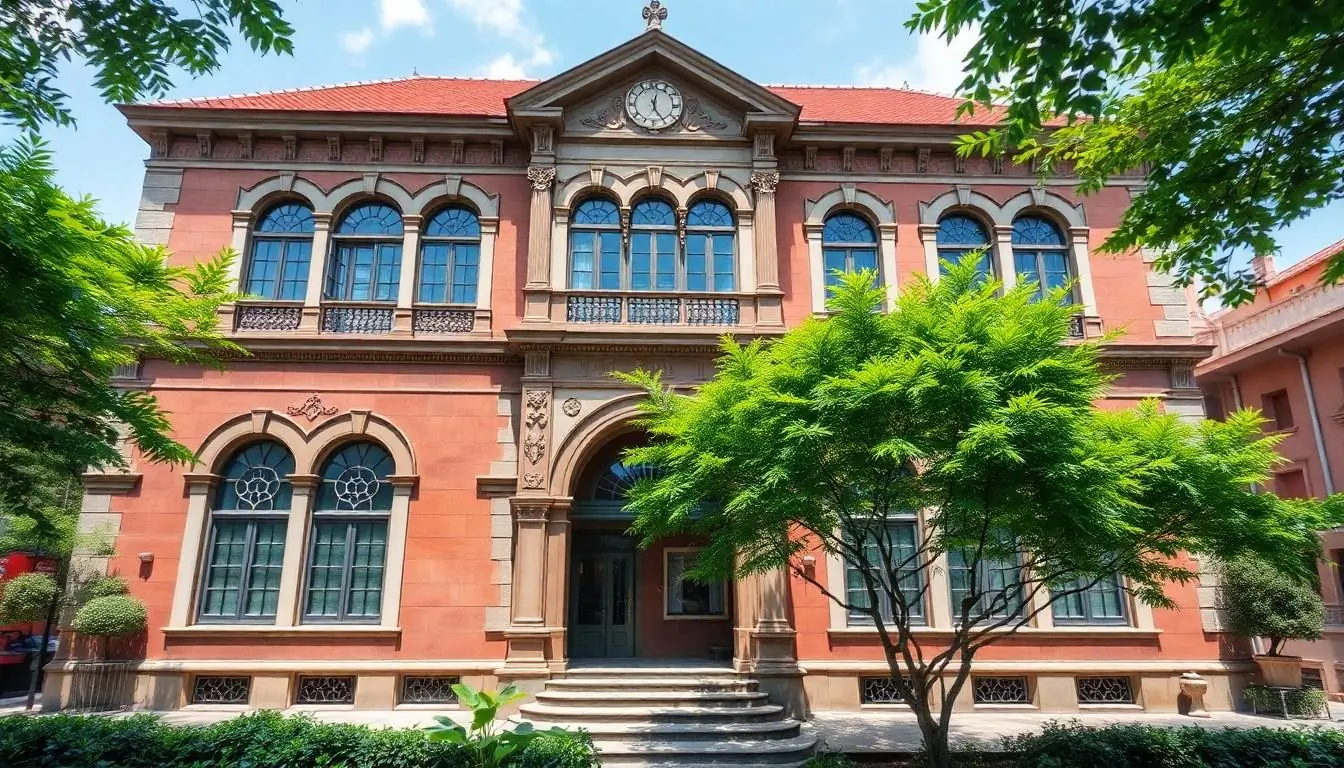Owning a listed building is like having a piece of history right in your backyard. But with great history comes great responsibility, especially when it comes to protecting that charming old structure. Listed building home insurance isn’t just a safety net; it’s your trusty sidekick in the battle against unexpected mishaps, like a mischievous squirrel attempting a renovation project of its own.
Table of Contents
ToggleUnderstanding Listed Buildings
Listed buildings are structures recognized for their architectural or historical significance. They require special care and specific considerations for maintenance and renovations.
Definition of Listed Buildings
Listed buildings are classified into three categories: Grade I, Grade II*, and Grade II. Grade I buildings are of exceptional interest, while Grade II* indicates particular importance. Often, these structures date back several decades or centuries, showcasing unique styles and craftsmanship. Registration occurs through national heritage organizations, which review and designate buildings based on specific criteria. Owners of listed buildings face regulations that protect architectural features, ensuring preservation for future generations.
Importance of Preservation
Preserving listed buildings contributes to cultural heritage and community identity. Heritage conservation fosters an appreciation for historical architecture, attracting tourism and investment. Maintaining authentic elements enhances aesthetic charm, creating a sense of belonging among residents. Preservation also promotes sustainable practices, preventing waste from demolition and enabling reuse of existing materials. Historical buildings often reflect local craftsmanship and stories, adding value to neighborhoods. By preserving these structures, communities protect their unique character and foster a sense of responsibility toward history.
What is Listed Building Home Insurance?

Listed building home insurance protects properties recognized for their historical and architectural significance. Such insurance caters to the specific needs of owners, ensuring valuable features remain safeguarded.
Special Considerations
Owners of listed buildings face unique challenges. Regulations often dictate the types of repairs and materials permitted, requiring specialized knowledge. Local authorities may enforce strict guidelines regarding alterations or renovations. Insurers frequently assess the building’s grade—Grade I, Grade II*, or Grade II—to determine coverage options and premiums. Comprehensive home insurance must encompass both structural components and distinct decorative features.
Typical Coverage Options
Typical coverage options for listed building home insurance include property damage and liability protection. Policies often cover fire, theft, and flooding, but extra provisions are necessary for specialized repairs. Many insurers offer coverage for rebuilding costs, focusing on authentic materials and methods. Contents insurance ensures personal belongings within the building receive protection. Options for loss of rental income may also apply if the property generates rental revenue.
Factors Affecting Listed Building Home Insurance Premiums
Various elements influence the premiums for listed building home insurance. Insurers consider age, condition, location, and historical significance when determining coverage and pricing.
Age and Condition of the Property
Age plays a critical role in assessing insurance premiums. Older buildings often display unique architectural features that may require specialized maintenance or repairs. Its condition directly affects the cost of coverage, as well-maintained properties typically attract lower premiums. For instance, an extensively refurbished Grade II listed building may secure better rates than one in disrepair. Insurers evaluate the structural integrity and restoration history during the underwriting process. They prioritize properties with recent upgrades, as these indicate proactive management.
Location and Historical Significance
Location significantly impacts the cost of listed building home insurance. Properties situated in high-risk areas, such as flood zones, may face increased premiums due to the heightened risk of damage. Historical significance also matters; buildings with national heritage recognition tend to require more comprehensive coverage. Local preservation regulations may affect restoration work, creating additional costs. Insurers often assess the property’s surrounding environment, including community investment in conservation. Areas with recognized cultural value can also influence premiums, reflecting the building’s value to heritage and tourism.
Finding the Right Insurer
Selecting an insurer for listed buildings requires careful consideration of specific needs and coverage options. Owners must search for reputable insurers experienced in protecting properties with historical significance.
Reputable Insurers for Listed Buildings
Identifying insurers specializing in listed building home insurance significantly benefits owners. Notable companies in this niche often possess a proven track record of handling the unique challenges these properties present. Providers like Hiscox, Aviva, and Ecclesiastical Insurance are recognized for their expertise with listed buildings. Comprehensive policies offered by these insurers typically cover specialized repairs and preservation considerations. They understand the importance of adhering to local regulations, which is crucial for maintaining the property’s integrity.
Comparing Insurance Policies
Comparing various insurance policies helps owners find the best coverage at competitive rates. Effective strategies include examining terms and conditions, coverage limits, and exclusions specific to listed buildings. Reading reviews and seeking recommendations from other owners provides additional insights into insurer reliability. Owners should note that while premium costs may vary, coverage quality for specialized features remains paramount. Evaluating multiple quotes ensures property owners make informed decisions tailored to their unique situations.
Tips for Homeowners
Homeowners of listed buildings must navigate unique considerations for insurance and maintenance. Here are key tips to ensure comprehensive protection and compliance.
Maintaining Compliance with Regulations
Regulations surrounding listed buildings often mandate specific guidelines for repairs and renovations. Owners must consult local authorities before making any alterations to maintain compliance. Familiarizing oneself with the building’s listed status helps in understanding legal obligations. Engaging with qualified professionals for any modifications is essential, as they ensure adherence to preservation standards. Compliance not only protects the building’s historical integrity but also affects insurance coverage and premiums directly.
Documenting Property History
Documenting the property’s history enhances both its market value and insurance coverage. Owners should gather details such as original architectural plans, past renovations, and historical significance. Maintaining a comprehensive archive of ownership records and repair receipts showcases diligence and transparency. This information supports accurate insurance assessments and claims processes, contributing to better coverage. Additionally, sharing the property’s narrative can be beneficial when seeking specialist insurers familiar with the building’s heritage.
Owning a listed building comes with unique responsibilities and rewards. The right home insurance is crucial for protecting these architectural treasures from unforeseen events. By understanding the specific needs of listed properties and selecting an experienced insurer, owners can ensure comprehensive coverage that meets their unique challenges.
Maintaining compliance with preservation regulations not only safeguards the building’s integrity but also enhances its value. With careful planning and the right insurance, owners can enjoy their historic homes while contributing to the preservation of cultural heritage for future generations.


